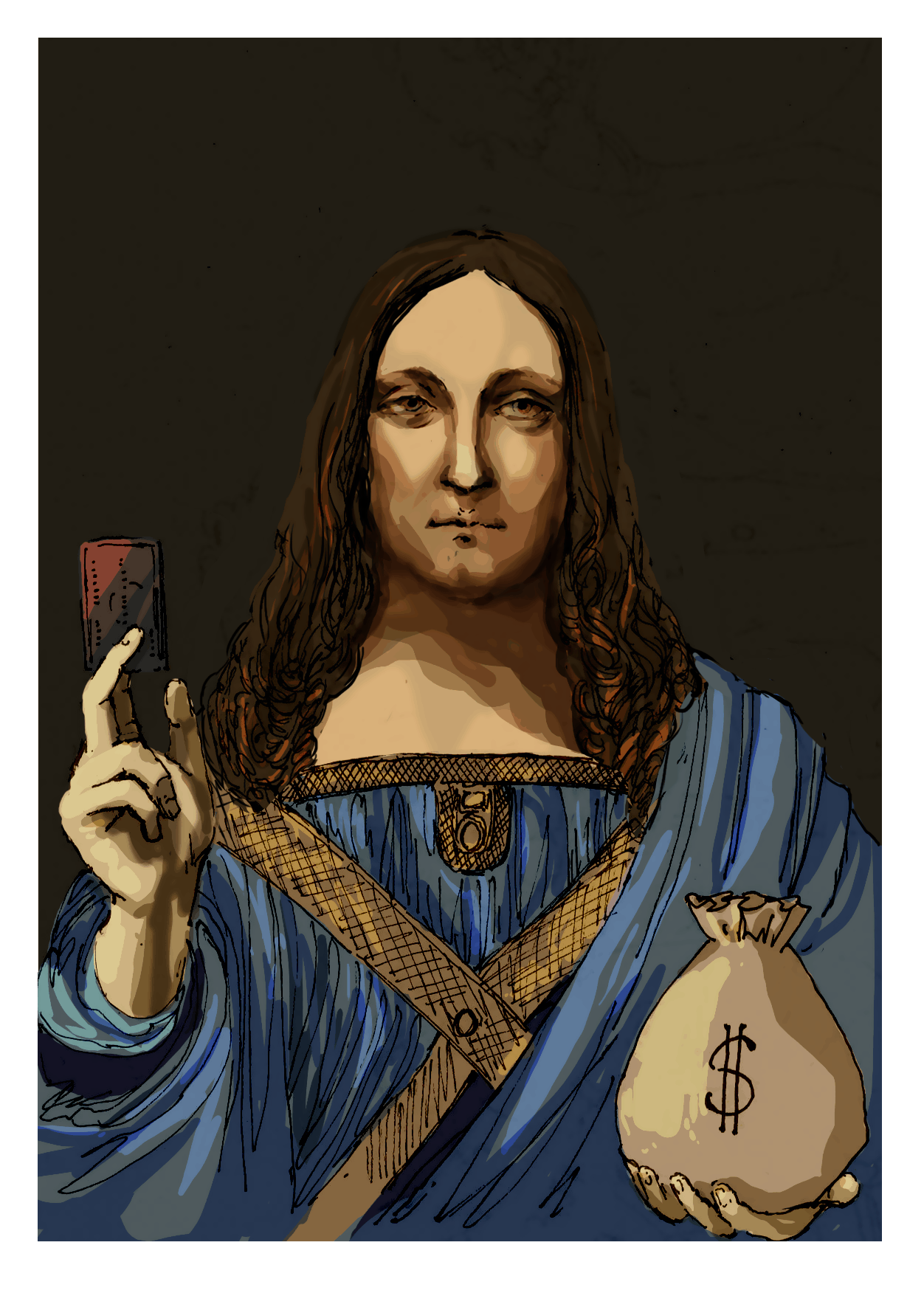$450 million USD — that’s how much Leonardo da Vinci’s “Salvator Mundi” sold for at a November auction run by the prestigious Christie’s auction house in New York City.
This staggering amount eclipsed the previous record holder for sale of a painting, Willem de Kooning’s “Interchange,” at $300 million USD.
The story of “Salvator Mundi” is one worthy of a major motion picture, including a dramatic rediscovery, questionable attribution, legal battles, Russian businessmen, worldwide marketing tours, and purchase for dodgy enterprises.
The drama begins more than 500 years ago, when the painting was supposedly commissioned by King Louis XII of France. Afterward, it was sold, recalled back to the English monarchy, and then it vanished in the late sixteenth century.
The painting resurfaced in 1900, sold for a mere £45 at an auction in 1958, and once again remained obscure until 2005, when it was bought at an estate sale in the US.
In 2007, the painting went through restoration, and in 2011 it was finally authenticated and attributed to the one and only Leonardo da Vinci. Afterward, it was put on display at the National Gallery in London.
In 2013, “Salvator Mundi” was involved in a chain of important events, including deals and legal battles, that ultimately culminated in its record-setting sale that November day at Christie’s.
Swiss art dealer Yves Bouvier was at the centre of what came to be known as the ‘Bouvier Affair,’ a complicated and protracted legal case where Bouvier was accused of defrauding the buyer, Dmitry Rybolovlev, of millions of dollars’ worth of art.
One of Rybovlev’s purchases from Bouvier was “Salvator Mundi,” which he finally put up for auction at Christie’s.
The painting depicts Jesus Christ holding a crystal orb, his hand pointing up in benediction. It’s a wonderful piece, giving Christ an ethereal, almost ghostly look. His flowing locks of hair give him a feminine aspect, showcasing da Vinci’s penchant for male figures that blur gender lines.
“Salvator Mundi” translates to “saviour of the world;” in da Vinci’s representation, Christ literally holds the universe and protects it from harm.
There is still debate over the attribution of the painting and whether or not it is a real da Vinci. With a reputation for rarely finishing paintings, there are currently fewer than 20 of da Vinci’s works known to be in existence.
Both The New York Times and The Wall Street Journal, drawing on sources in American intelligence, reported that the true buyer of the painting was Mohammed bin Salman, the Crown Prince of Saudi Arabia, though he may have used a family member and close associate as a ‘straw buyer.’
Salman’s purchase is evidence of the growing trend of oil-rich states attempting to project soft power on the world stage via the acquisition of cultural artifacts and institutions. Qatar has purchased two of the top four most expensive paintings ever sold.
A priceless painting is to be displayed in the Louvre Abu Dhabi, as Salman battles through a purge of his political rivals, consolidating his power, while attempting to liberalize Saudi Arabia.
In a nutshell, today’s art market encapsulates modern wealth inequality and the indulgences of capitalist markets. Christie’s was sharply criticized for taking the painting on essentially a worldwide press tour and making a mockery of the process of its sale — to the point of describing it as the “male Mona Lisa.”
The exorbitant price of the painting has also raised a few eyebrows. Increasingly, the art market is becoming an instrument for money laundering, which directly influences the rising cost of art. It’s unlikely that we’ll see a ceiling in the foreseeable future.


